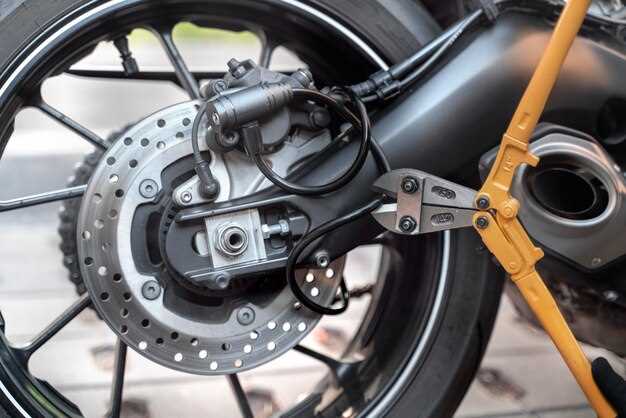
When it comes to racing, every detail counts–especially your braking system. The right set of brake pads can significantly influence your track performance, affecting everything from lap times to vehicle control. With countless options on the market, it’s crucial to identify which brake pads provide the best balance of performance, durability, and heat resistance.
Racing brake pads are specifically designed to withstand extreme conditions encountered on the track. Unlike standard brake pads, these high-performance options offer superior friction characteristics, allowing for consistent stopping power under intense driving. Moreover, they are formulated to handle elevated temperatures generated during high-speed maneuvers, ensuring that your vehicle remains reliable in the heat of competition.
In this article, we will explore some of the top racing brake pads available today, evaluating their features, benefits, and performance attributes. Whether you are a seasoned racer or just starting out, understanding the importance of selecting the right brake pads can enhance your track experience, providing both confidence and control at high speeds.
Choosing the Right Compound for Track Conditions

When selecting brake pads for track performance, the compound used is crucial to achieving optimal braking efficiency. Various compounds are designed to perform under specific conditions, influencing heat tolerance, friction levels, and wear rates.
High-friction compounds, typically made from semi-metallic or carbon-carbon materials, excel on dry tracks. These materials provide excellent bite and responsiveness, allowing drivers to achieve maximum deceleration with minimal pedal effort. However, they can be problematic in wet conditions, where reduced friction may lead to longer stopping distances.
For wet tracks, ceramic or organic compounds may be more suitable. These materials tend to offer more consistent performance in fluctuating temperatures and moisture levels. While they may not provide the same level of initial bite as their high-friction counterparts, they excel in modulation and control, allowing for smoother braking transitions in slippery conditions.
It’s also essential to consider the temperature range at which the brake pads will operate. Racing pads often have a specific operating temperature where they perform best. For instance, some pads provide optimal performance at lower temperatures, while others require heat to activate their full potential. Understanding the typical track conditions and the expected temperature range will help select the appropriate compound.
Additionally, wear resistance is a factor. Track conditions can lead to increased abrasion on brake pads, so choosing a compound with high durability can prevent frequent replacements. Consider the endurance of the material, especially for long races where consistent performance is necessary throughout the event.
Finally, consulting with experienced racers and manufacturers about compound recommendations for specific tracks can provide valuable insights. Different circuits present unique challenges, and the right compound can make all the difference in performance and safety on the track.
Installation Tips for Optimal Performance

To ensure that your racing brake pads deliver optimal performance on the track, proper installation is crucial. Here are key tips to consider:
1. Clean the Brake Components: Before installing new brake pads, clean the calipers, rotors, and other related components. Remove any dust, debris, or old brake pad material using a suitable brake cleaner. This helps ensure maximum contact and efficiency.
2. Inspect the Rotors: Check the condition of the brake rotors for any wear, warping, or scoring. If the rotors are damaged, they should be resurfaced or replaced to maintain effective braking performance.
3. Use Proper Lubrication: Apply a thin layer of high-temperature brake grease to the backing plates of the brake pads and any sliding surfaces on the calipers. Avoid getting grease on the pad surface, as this can adversely affect braking performance.
4. Follow Manufacturer Guidelines: Always adhere to the manufacturer’s instructions for installation. Different brands and models may have specific requirements regarding torque settings, orientation, and bedding procedures.
5. Bed In the Brake Pads: Proper bedding is essential for the pads to achieve optimal friction performance. Gradually heat up the brakes by performing several moderate stops, allowing time for cooling between stops. This process helps to transfer friction material to the rotors.
6. Check Brake Fluid: Inspect the brake fluid level and quality. If the fluid is contaminated or low, it should be replaced to ensure responsive braking. Consider using a high-performance brake fluid suitable for racing applications.
7. Ensure Proper Torque Settings: After installation, always double-check the torque on caliper bolts and bracket bolts according to the manufacturer’s specifications. This ensures that components are secure and minimizes the risk of brake failure during high-stress conditions.
8. Test the Setup: After installation, test the brakes in a safe environment before hitting the track. Ensure there is no abnormal noise, vibration, or pedal feel, and make adjustments as needed.
By following these installation tips, you’ll maximize the performance of your racing brake pads and enhance your overall track experience.
Maintenance Practices to Extend Brake Pad Lifespan
Maintaining brake pads is essential for optimal track performance and safety. Regular inspection is crucial; checking for wear indicators and grooves can help identify when replacement is necessary. Look for uneven wear patterns that may indicate issues with the braking system.
Proper bedding of new brake pads is a critical step. This process involves gradually heating up the pads and rotors to establish an effective contact surface, enhancing braking efficiency and reducing premature wear. Follow the manufacturer’s guidelines for bedding procedures to achieve the best results.
Keeping brake components clean can significantly extend the lifespan of brake pads. Dirt, debris, and brake dust can lead to increased friction and overheating. Regularly clean the calipers and rotor surfaces to ensure smooth operation. Using a quality brake cleaner can help remove any contaminants effectively.
Ensure that the brake system is adequately lubricated. Applying brake grease to the caliper slides, pins, and contact points minimizes friction and allows for better movement of the pads. Avoid applying lubricant directly on the pad or rotor surfaces, as it can compromise braking performance.
Monitoring brake fluid is also vital. Old or contaminated brake fluid can lead to compromised braking efficiency and increased heat generation. Change the brake fluid according to the manufacturer’s recommendations or if it appears discolored or contaminated.
Consider the driving style and track conditions. Aggressive driving and frequent high-speed braking can lead to faster pad wear. Adjusting driving habits, such as anticipating braking points and using engine braking when possible, can reduce stress on pads.
If your vehicle is frequently used for track days, invest in high-performance brake pads designed for endurance. These pads are formulated to withstand high temperatures and harsh conditions, ultimately providing improved performance and longevity.
Finally, regularly check and maintain the entire braking system, including rotors, calipers, and brake lines. Any issues in these components can adversely affect brake pad longevity and overall performance, ensuring that your track experience remains safe and effective.
